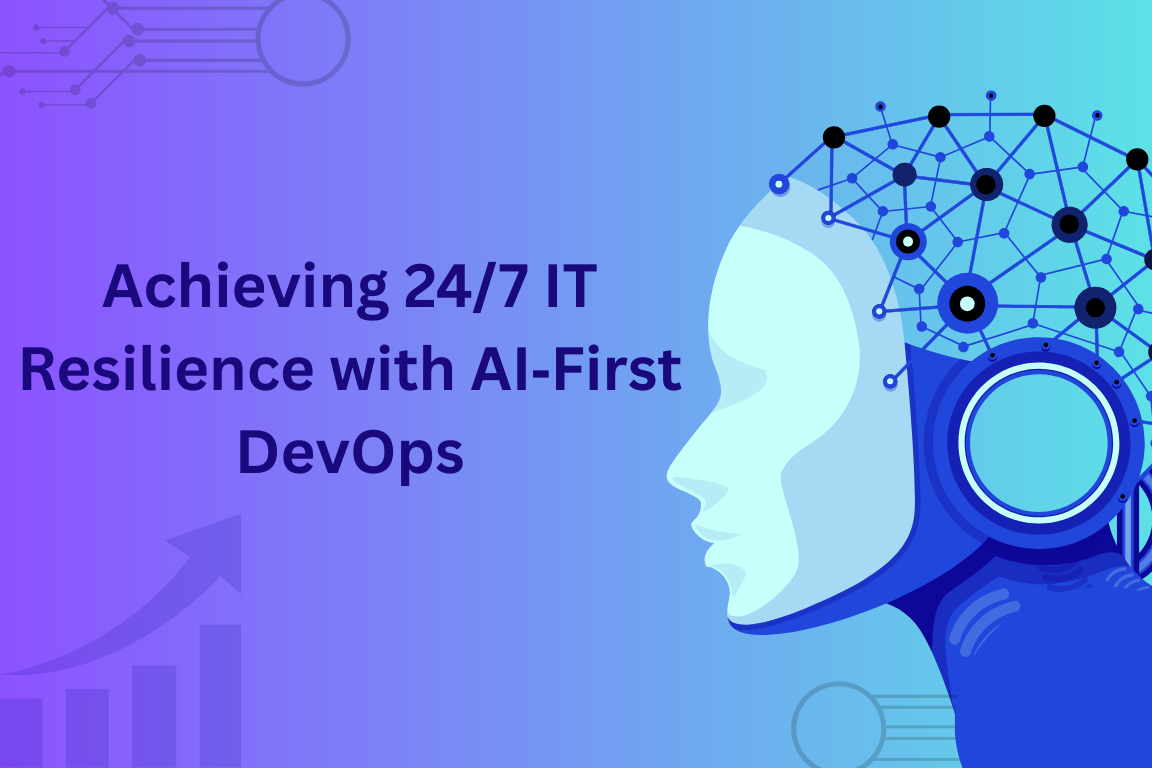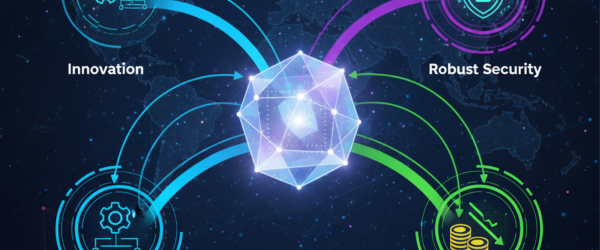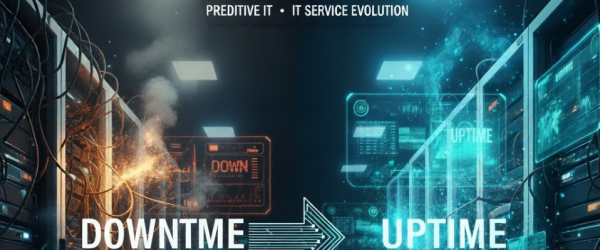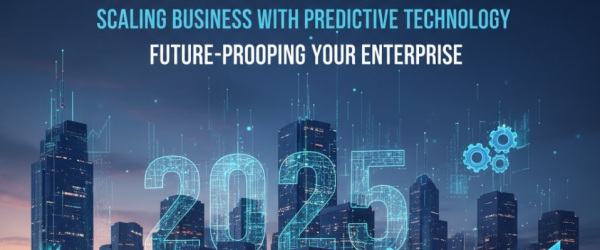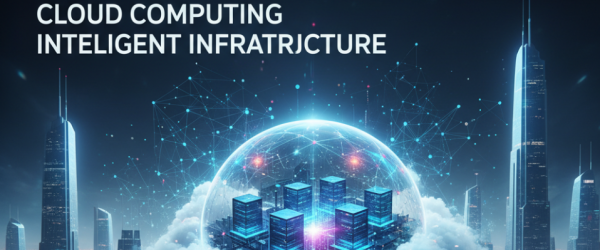Introduction
In modern digital environments, IT resilience — the ability of systems to withstand disruptions and recover quickly — is no longer a luxury, but a necessity. As downtime and slow recovery can cost organizations millions, AI‑First DevOps emerges as a powerful strategy to ensure continuous operations, proactive issue resolution, and robust reliability.
What does “AI‑First DevOps” mean?
AI‑First DevOps is the approach of embedding AI and machine learning into DevOps pipelines and operations — not as optional addons, but as core enablers. This includes predictive analytics, anomaly detection, automated incident response (auto‑remediation), intelligent alerting, and self‑healing systems. Rather than waiting for failures, AI tools identify risks before they manifest and initiate responses automatically or semi‑automatically.
Why IT Resilience Matters
| Metric | Impact on Business |
| Downtime per hour | Revenue loss, customer churn |
| MTTD (Mean Time to Detect) | Faster detection = lower risk |
| MTTR (Mean Time to Repair) | Quicker fixes = less business impact |
| System availability (uptime) | Directly tied to customer trust |
Organizations with poor incident response times risk losing up to 22% of customer loyalty after just one prolonged outage.
Achieving 24/7 uptime isn’t just a tech issue—it’s a business priority.
How AI Enables Continuous Resilience
Here’s how AI‑driven DevOps transforms IT operations for always-on reliability:
1. Predictive Monitoring & Anomaly Detection
AI algorithms analyze logs, metrics, and traces to detect subtle patterns and predict potential system failures before they happen.
2. Self-Healing Systems
Through automated runbooks and workflows, systems can auto-restart services, roll back deployments, or reroute traffic—without human input.
3. Intelligent Alerting
AI reduces alert fatigue by prioritizing high-risk incidents and filtering out noise, ensuring teams focus only on what truly matters.
4. Automated Root Cause Analysis (RCA)
Instead of manually digging through logs, AI tools identify the root cause of incidents quickly, drastically reducing MTTR.
5. Continuous Learning
AI models improve over time by learning from incident history and feedback, making the system more resilient with every iteration.
Traditional DevOps vs AI‑First DevOps
| Capability | Traditional DevOps | AI‑First DevOps |
| Monitorig | Manual & reactive | Predictive & proactive |
| Incident Respone | Manual troubleshooting | Automated self-healing |
| Root Cause Analysis | Time-consuming | AI-assisted, real-time |
| Alert Management | High noise levels | Intelligent filtering |
| Resource Optimization | Periodic tuning | Dynamic, AI‑driven scaling |
Challenges to Implementation
While the benefits are clear, companies may face challenges when moving to AI‑First DevOps:
- Legacy systems: Older architectures may not support AI integrations without refactoring.
- Cultural resistance: Teams may be hesitant to trust AI-driven processes.
- Data quality: AI requires clean, consistent data to make accurate predictions.
- Tool complexity: Managing and integrating multiple tools into a cohesive system can be a barrier.
However, with proper planning and gradual adoption, these challenges can be mitigated.
How to Get Started with AI‑First DevOps
- Assess your current DevOps maturity
Identify where manual processes are causing delays or failures. - Define clear resilience goals
Focus on measurable outcomes like MTTR, uptime, and incident frequency. - Choose the right AI tools
Select platforms that integrate seamlessly with your CI/CD pipelines and observability stack. - Automate incrementally
Start with automated alerting, then add self-healing and predictive analytics over time. - Train your teams
Upskill your DevOps engineers and SREs to work effectively alongside AI systems.
Educational Insights for the Future
- By 2026, over 60% of DevOps teams are expected to integrate AI for at least one core operation.
- Companies that embed AI into their DevOps toolchain report 30–50% faster incident response and a 40% reduction in downtime.
AI also plays a key role in DevSecOps, helping identify security vulnerabilities earlier in the development lifecycle.
Conclusion
AI‑First DevOps is no longer a futuristic concept—it’s a present-day necessity for organizations that value reliability, speed, and scalability. As customer expectations rise and systems grow more complex, 24/7 IT resilience must be built into the DNA of your infrastructure.
By embracing AI-powered automation, predictive monitoring, and intelligent remediation, your business can stay online, all the time—no matter what.

